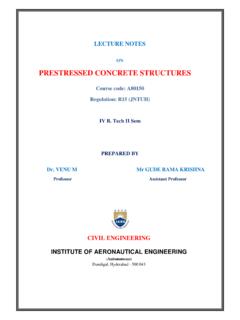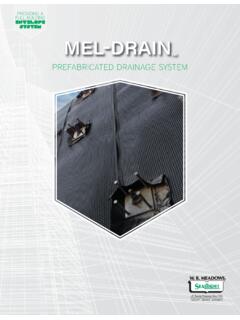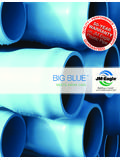Transcription of Aluminium Busbars - Albus Industries
1 Aluminium Busbars AB 2013A Contents Introduction Aluminium for Busbars 1 Reliability 1 Properties Aluminium and Copper Specifications 2 Thermal Capacity, Conductivity, Mechanical Strength and Weight 3 Metallurgy Corrosion 4 Oxidation 5 Fretting 6 Whiskering 6 Electroplating Tin Plating 7 Silver Plating 7 Nickel Plating 8 Nickel Sulfamate 9 Organic Coating 9 Current Ratings Current Carrying Capacity 10 Conductor Material 10 Enclosure Size and Material 10 Ventilation 10 Skin Effect 11 Proximity Effect 11 Enclosure Material 12 Emissivity 12 Symmetry 12 Standard Rectangular Bars 13 Non-standard Shapes 14 Non-std Shapes Typical arrangements 15 Short-Circuit
2 Effects Short-Circuit Effects 16 Electromagnetic Forces 16 Thermal Effects 17 Installation Installation Procedures 18 Thermal Expansion 19 Stress, Relaxation and Creep 19 Bolt Types and Belleville Washers 19 Bolted Joints 19 Tightening Torque 20 Bending 20 Bus-Stab Connections 20 Joint Resistances 21 Lubrication 21 Standards 23 Acknowledgments 24 References 24 The accuracy of the information shown is to the best of our knowledge and understanding. The company cannot accept responsibility for any direct and indirect damages resulting from the possibility of errors or the incorrect application of the information shown.
3 We reserve the right to make changes consistent with our policy of product improvement. 1 Introduction Aluminium for Busbars There are only two materials suitable as conductors of electricity. These are Aluminium and copper. The materials are quite different, and both have advantages and disadvantages. It is inevitable that users of copper will compare the material that they are familiar with to Aluminium . For this reason, where applicable, comparisons are provided. High voltage transmission lines are almost exclusively Aluminium for reasons of weight and cost. Bus ducts are normally available in copper or Aluminium . However, the choice for Busbars in switchboards and motor control centres is largely dependent on location rather than the merits of the material.
4 Some countries use Aluminium (unless otherwise specified), where others normally use copper. The main considerations for both materials are- Mechanical Properties Electrical Properties Reliability Cost Availability The primary concern in the use of Aluminium Busbars is the jointing between Aluminium , and to dissimilar metals such as plain and plated copper. This is addressed by the application of a patented plating process. (Described on page 9) It is this process that allows Aluminium to be considered as a viable alternative where copper is predominant. Reliability Aluminium conductors have been used successfully for electrical purposes for more than 100 years.
5 The first Aluminium Busbars in the were made by ALCOA in 1895. these were rated at 20,000A and installed at ALCOA s Niagara works. In 1962, the Indian Government banned the use of copper for power cables, followed by Busbars for the simple reason that India had very little copper deposits, but bauxite (from which Aluminium is derived) was plentiful. As a result, India has had around 40 years of experience in the use of Aluminium Busbars . Finland is another example of a country using only Aluminium for Busbars . Internationally recognised companies manufacturing switchboards with type-tested Aluminium Busbars include SCHNEIDER, LARSON AND TOUBRO, and ELSTEEL.
6 Provided that the Busbars are sized according to thermal rating, arranged and supported according to short-circuit rating and properly connected, copper and Aluminium are equally reliable. Faulty connections are the leading cause of electrical failures, regardless of the conductor material. Properties Aluminium and Copper Specifications Definitions Specific Heat: The heat required to raise the temperature of its unit by mass by 1 C.(This is a physical property) Density: This is it s mass per unit volume. This is defined as mass divided by volume. Melting Point: The point at which it changes state from a solid to a liquid. Ultimate tensile Strength: The maximum stress value as obtained on a stress-strain curve.
7 Ultimate Shearing Strength: The force that will shear the material, and act in the plane of the area at a right angle to the area subjected at such force. Elastic Modulus: The ratio of the unit stress to the unit strain within the pro-portional limits of a material in tension or compression. tensile -proof Strength: (yield strength) The point between 60 80% of the ultimate tensile strength of the material where a permanent deformation will occur. Coefficient of Expansion: This is the fractional change in length per degree of temperature change. IACS: International Annealed Copper Standard. 2 Parameters Aluminium Copper Relevant Standards IEC 60105 ISO 209-1,2 IEC 60028 Grade 6101 100% IACS Physical Properties Chemical Composition Specific Heat C Density gm/cm2 Melting Point C (Refer page 3)
8 660 99% pure 1083 Mechanical Properties Ultimate tensile Strength kgf/mm2 Ultimate Shearing Strength kgf/mm2 Elastic Modulus kgf/mm2 tensile -proof Strength kgf/mm2 15 6,700 22-26 16-19 12,000 60-80% of tensile strength Electrical Properties Specific Resistance cm Volume Conductivity mm2 Conductivity % IACS Co-efficient of expansion mm/m/ C 57 x 10-5 58 100 x 10-5 Properties Aluminium Busbar Specifications Pure Aluminium has a conductivity of about 65% IACS (International Annealed Copper Standard) Alloy 6101.
9 This heat treatable wrought alloy is recognised internationally as providing the optimum combination of strength and electrical conductivity for Busbars . Temper T6. This is solution heat treated and artificially aged to maximum mechanical property levels. Thermal Capacity The thermal storage capacity of Aluminium is cal/gram/ C. For copper it is cal/gram/ C. Therefore Aluminium has a thermal storage capacity of more than 2-3 times that of copper. This is used to advantage in wound transformers, as Aluminium can withstand more surge and overload currents. Conductivity When the density of copper ( gm/cm ) is compared to Aluminium ( ) and taking into consideration the conductivity ratio of Aluminium to copper of 57% for grade 6101 Aluminium , Aluminium has approximately times that of copper.
10 Copper has a greater conductivity on an equal volume, cross sectional area basis. Mechanical Strength Aluminium does have a lower tensile strength (37%) than copper for the same cross section of material. However, approximately 66% greater cross-section of grade 6101 Aluminium is required to carry the same amount of current as would be re-quired for a copper conductor, so the larger cross-section of Aluminium approaches the tensile strength of copper for a given ampacity. Weight Aluminium is approximately 30% of copper of the same size. The charts on page 13 show weights per metre for standard rectangular Aluminium and copper bars. 3 CHEMICAL COMPOSITION Silicon Iron Copper Manganese Magnesium Chromium Zinc Total of other elements Remainder is Aluminium Metallurgy As Aluminium and copper are used for Busbars , and both for terminations on switchgear, the various forms of corrosion are described for each.






